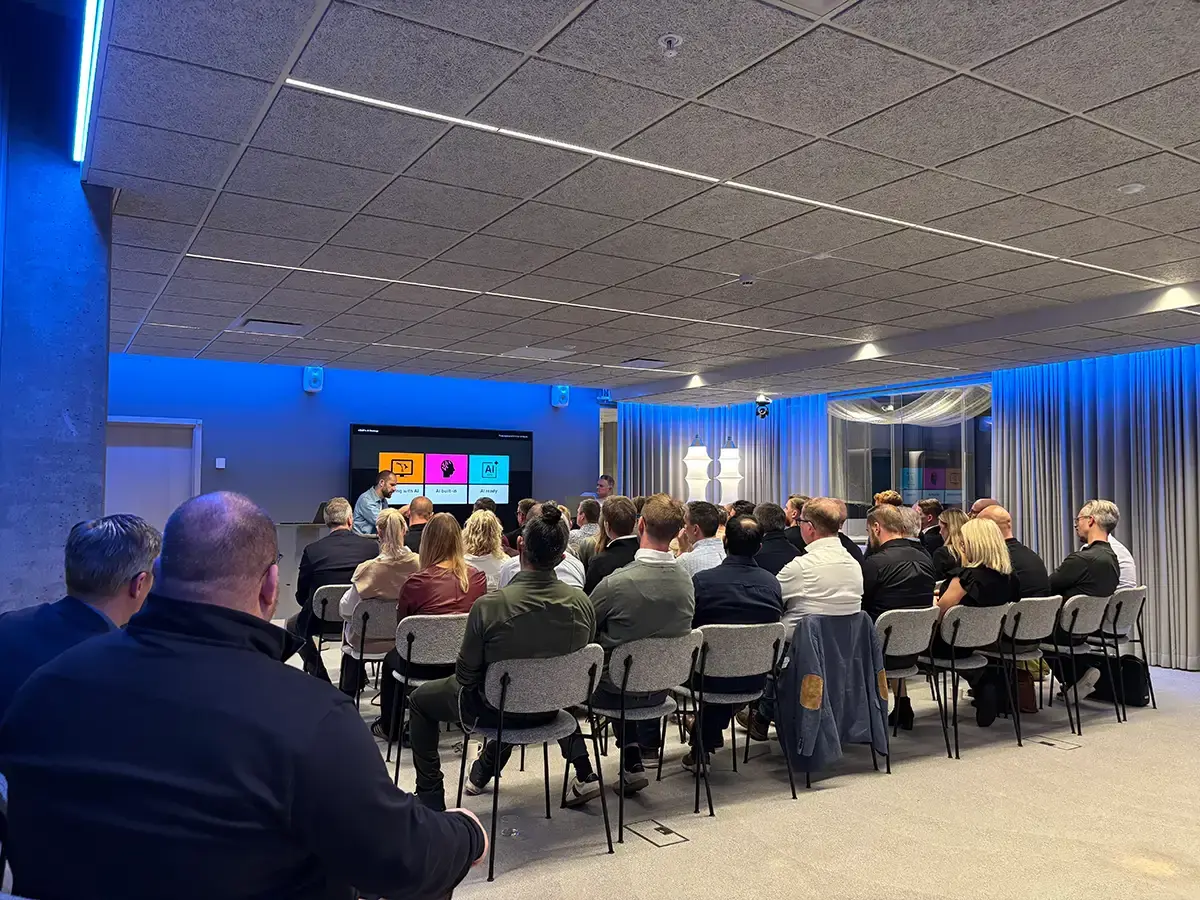
We are delighted to present our second nShift expert: Christian Zanders, Partner and Head of E-Commerce at Wellstreet. With more than 20 years in the industry, he sure knows a thing or two about e-commerce.
We talk about how the initial growth of e-commerce was quite slow during the first 10 years, before it really took off and the retail industry accepted that e-commerce is crucial to the entire business and customer relationships.
What does this mean for the future of e-commerce? Read the full interview below.
In what way are you involved with e-commerce today?

Christian Zanders
Partner & Head of E-Commerce
Wellstreet
I lead the e-commerce segment at Wellstreet, including investments in new companies, and managing our existing portfolio companies. One company is nShift, which is really starting to become an established player in the Nordic ecosystem for e-commerce. Additionally, I work a lot with Brink Commerce, which is a new SaaS e-commerce platform for larger and fast-growing e-retailers.
Brink is growing so fast that it is, to say the least, an intense phase as we have already gained several customers of significant size both in Sweden and internationally. I also serve on the board of Textual, a content creation platform that automates a large part of the heavy work with translations and text production. The product is used by several large e-retailers in both Sweden and Europe.
In short, I am probably more active than ever in e-commerce today 🙂
Tell us about your e-commerce background?
I have spent the past 20 years focusing on SaaS systems for e-commerce. Even though I have no coding skills, I have always been very involved in product development. I founded, and ran, Jetshop for 15 years. We were pioneers, and initially, it was just as much about selling the e-commerce phenomenon as it was about actually selling our product. All the customers we worked with initially gave invaluable insight into what issues would be important for an e-retailer.
It was not until somewhere around 2011 that the e-commerce we see today began to take shape. It was also around that year we created the SEBC conference as part of our marketing strategy. The conference grew quickly to become one of the largest annual events in e-commerce in Sweden with around 1,000 visitors per year.
In developing and changing industries like e-commerce, it is a daily challenge for your product to stay relevant. It’s easy to say that a product is never ready or complete, but it is really true. I have had the privilege of working closely with several talented people behind many of the companies that form the backbone of Swedish and European e-commerce today. It is perhaps the most important source of knowledge to understand what challenges an e-retailer has and will have in the future. Unfortunately, it is not possible to see into the future, but it helps to identify what will be required of the technology.
In short, my background in e-commerce is mainly based on the interaction between the customer and the products that the customer needs to drive sales.
Being part of the industry for a long time, how do you feel that e-commerce has changed over the years?
At first, the evolution of e-commerce went quite slowly. It was not until 10 years later that retail truly accepted that e-commerce is essential to the entire business and the relationship with the customer. In the last 10 years, the development has been substantially faster.
The introduction of smartphones and new media platforms were major catalysts for the adoption of e-commerce by the consumer. Although, in a technical sense, it is of course much more complex today compared to 10-15 years ago. The consumer expects a friction-free experience, which requires that all systems talk to each other. Essentially, from purchasing goods to returns handling. Additionally, the volumes that go through the systems are also many times larger than they were just a few years ago. The demand for systems that can meet these requirements is massive.
Another major challenge for many online retailers is the lack of qualified staff who can drive the development of their e-commerce. There is a significantly greater demand than supply of people with the right knowledge and skills. Potential employees who can fill all services in everything from performance marketing to e-commerce managers and tech leads. As the e-commerce industry continues to grow, more businesses realize that expertise is central to competing.
What trends have you seen come and go, are there any that stand out a little extra?
Of course, the influencer marketing model stands out. It is a huge shift in power that was not even possible before social media platforms emerged 10-15 years ago. As a result, it has accelerated international growth for many established brands, along with new brands that have been founded in recent years.

It is also interesting to see how logistics are finally starting to pick up the pace to meet the development demand. Delivery boxes and lots of “last miles solutions” have quickly been established as an essential part of the distribution chain. We are still only at the beginning of this evolution. That is probably what makes you keep going, it gets more fun as it becomes more strategically important for all customers.
Sustainability, is it a craze or something that e-retailers will need to work on more?
Big changes create great business opportunities. We are only at the beginning of the evolution towards business that is sustainable for the Earth. It is definitely not a trend, rather a necessity. Just like e-commerce, it will be a central part of all businesses in the future. But it is of course a challenging change that affects the business fundamentally.
Nudie Jeans is a fantastic example of this. A company that has its head office in Gothenburg, which warms a Gothenburg heart. They have concluded that profitable sustainability is necessary in order to have a sustainable business. Nudie is a real role model whose lead more e-tailers should follow.
Are there any up-and-coming trends that you see in the near future?
Today, in the European market, we may have around 15% of the entire trade that goes online. I am convinced that this number will more than double in the next 5-10 years. We talked, for many years, about trade becoming global. But now we see that it is actually happening. In Sweden alone, we have many great companies that have quickly taken a global position. Consecutively, it generates a great demand for technology that is built for the purpose and can withstand the upcoming tsunami.
In recent years, there has been a lot of focus on marketing and logistics. It will, of course, continue to be so. But, the technology used today for e-commerce is in most cases based on platforms that began to be developed for completely different conditions and based on the architecture and infrastructure that was applicable then.
Here, we will see a big shift in the next few years. A shift towards modern technical solutions that are adapted to the complexity that it means for an online retailer to satisfy a consumer in several international markets in the coming years.
Why are returns so important right now?
It is a very big part of the overall experience for the customer. Both from a sustainability and retention perspective. In this space, nShift has shown the effects of continuing all the way until the circle is closed. Both with outstanding results for profitability but also on more satisfied customers and a reduced climate footprint.
A big thank you for sharing your knowledge and experiences, Christian! And for those of you who are reading – keep an eye out for more experts in the near future.
About the author






